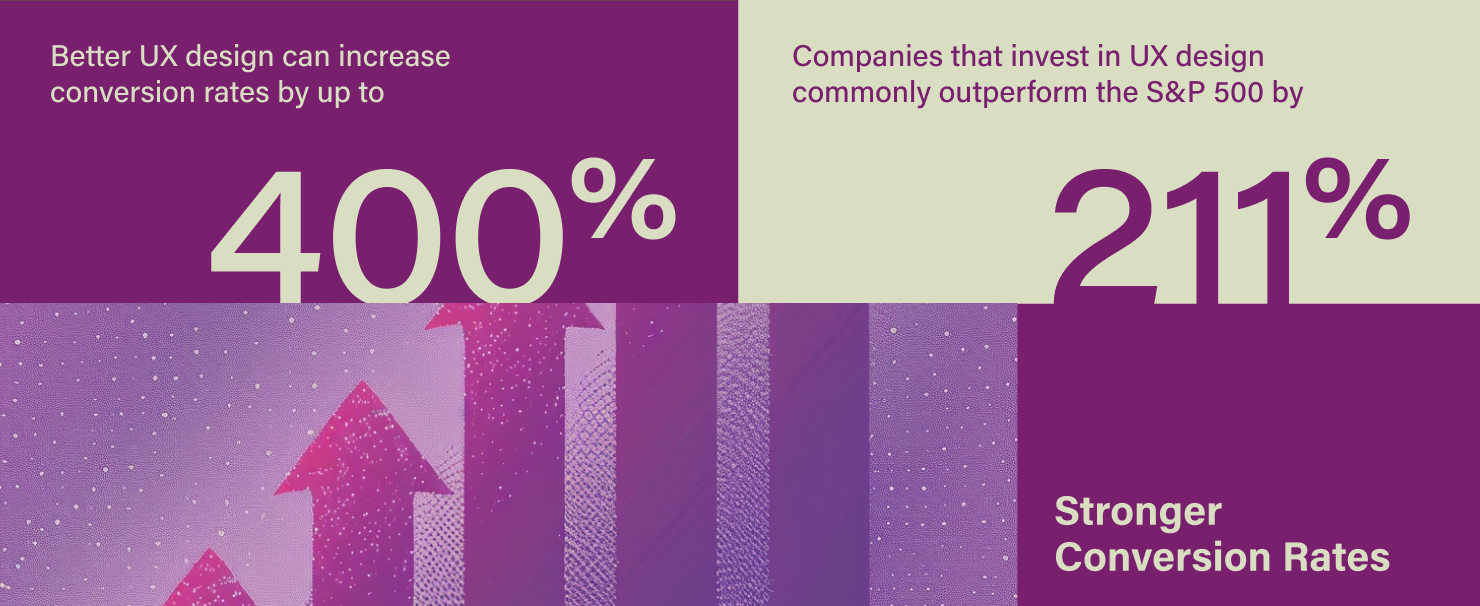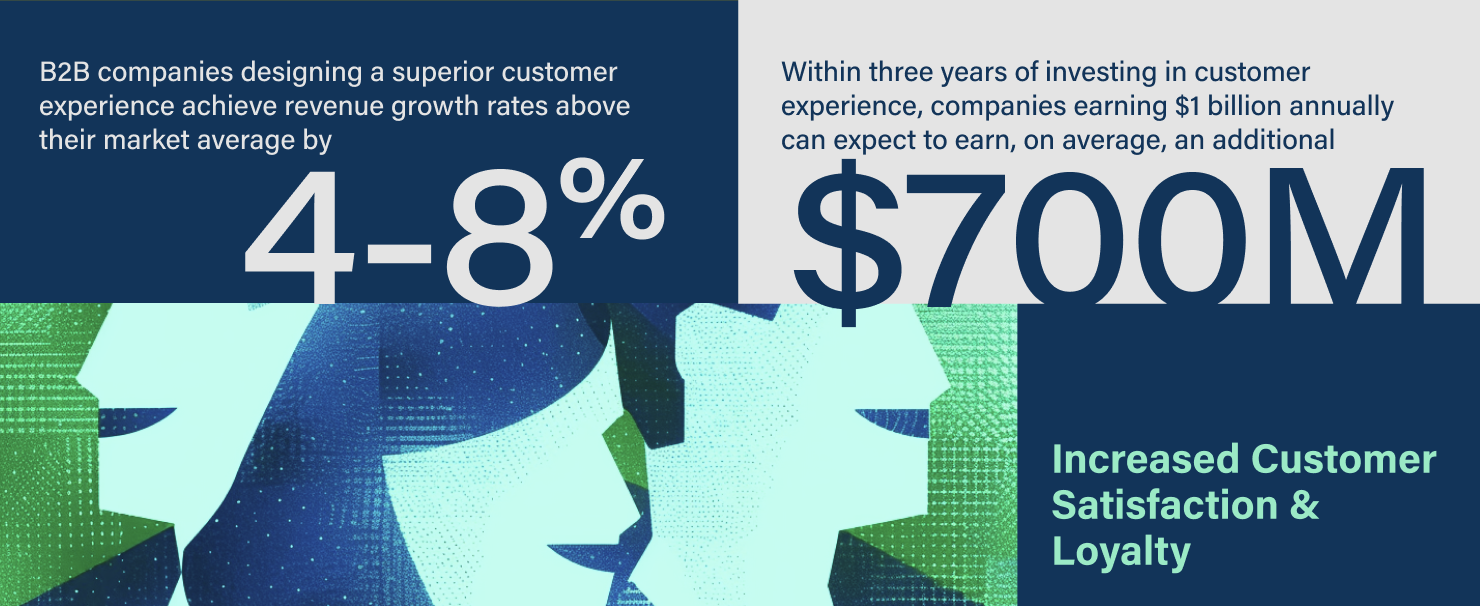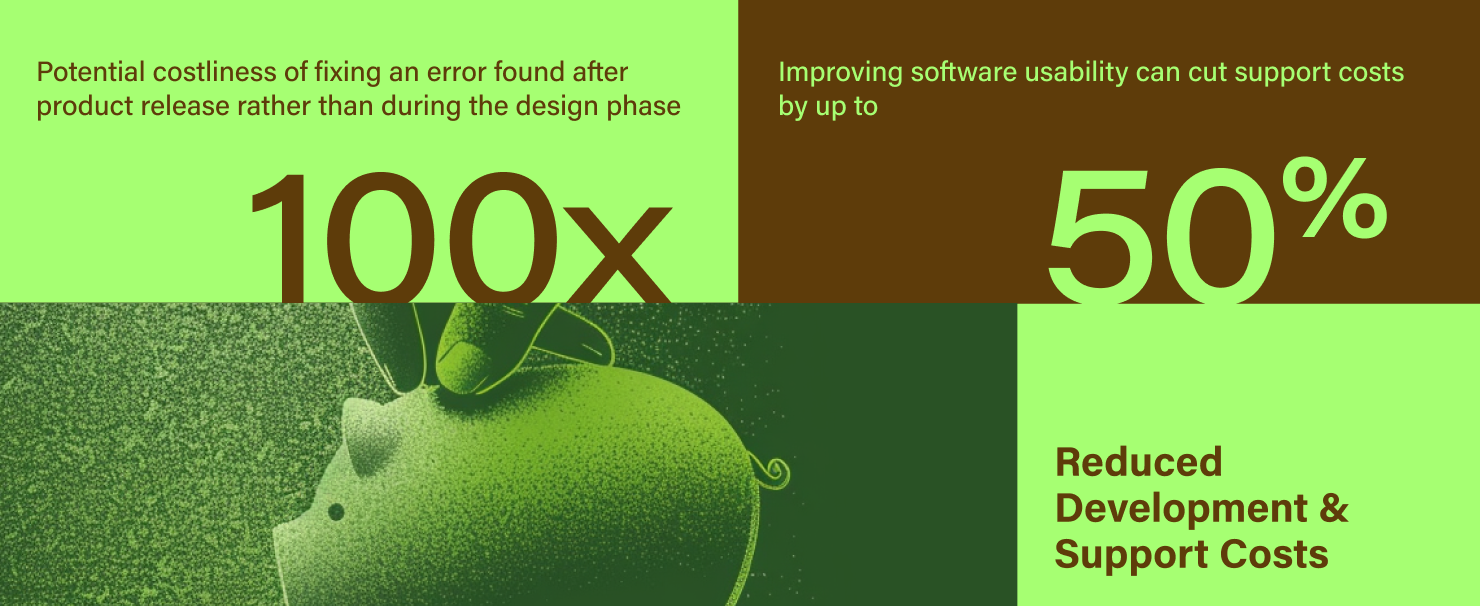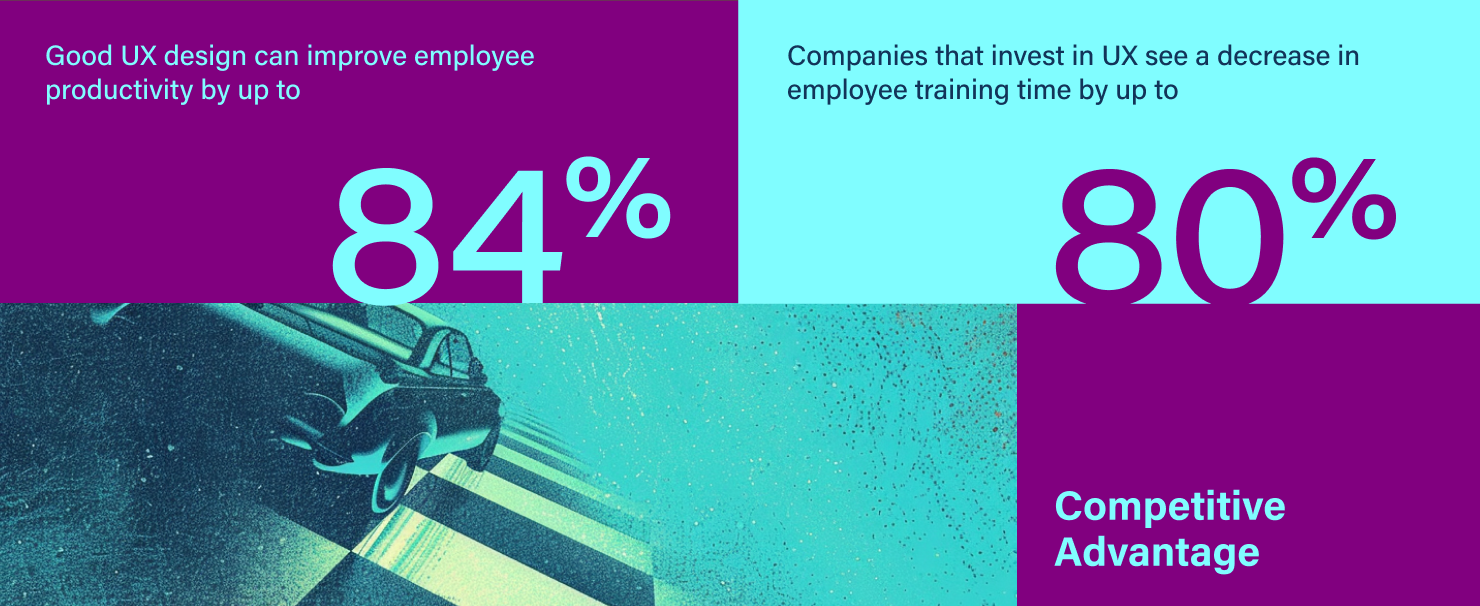Industry
Design by the Numbers: When Great UX Drives Business Growth
In today’s competitive B2B landscape, user experience (UX) design is no longer a luxury—it’s a necessity. While consumer-facing companies have long recognized the value of UX, B2B firms are increasingly realizing that great user experience can significantly impact their bottom line. In addition, there’s a need to remain competitive and incorporate the latest technologies in a way that’s targeted to your particular audience. People are coming to expect their workplace software to behave more and more like their consumer-facing technology, preferring experiences that are aesthetically appealing and easy to use. Let’s look at a few of the tangible benefits that effective UX design can deliver within the B2B space, by the numbers.
Stronger Conversion Rates
Conversion rates are a key metric for any business, directly reflecting the effectiveness of a website or application in turning visitors into customers. For B2B companies, a well-designed user experience can significantly improve these rates. According to Forrester Research, a better UX design can increase conversion rates by up to 400%. This substantial improvement is largely due to the ease of navigation, clear calls to action, and intuitive design that guides users through the sales funnel.
A study by the Design Management Institute also found that companies that invest in UX design outperform the S&P 500 by 211%. These companies are better able to meet the needs of their users, resulting in higher engagement and more successful conversions.
Increased Customer Satisfaction and Loyalty
Happy customers are loyal customers, and good UX plays a crucial role in satisfaction. According to a report by McKinsey, B2B companies that focus on providing a superior customer experience achieve revenue growth rates 4-8% above their market average.
Additionally, the Temkin Group found that companies earning $1 billion annually can expect to earn, on average, an additional $700 million within three years of investing in customer experience. This increase is driven by improved customer satisfaction, which leads to higher customer retention and reduced churn rates.
Improved Employee Productivity
Great UX design is not only beneficial for customers but also for employees. In B2B environments, where complex systems and processes are common, a well-designed user interface can streamline workflows and reduce the time employees spend on repetitive tasks. According to the Nielsen Norman Group, a good UX design can improve employee productivity by up to 25%.
In addition, a study by IBM found that simplifying the user experience of internal tools resulted in a 300% increase in employee productivity. This is because employees can complete tasks more efficiently, reduce errors, and focus on higher-value activities. Time and cost can be saved in training and onboarding as well, as companies that invest in UX see a decrease in employee training time by up to 50%.
Reduced Development and Support Costs
Good UX can reduce development costs by minimizing rework and iterations. When UX is prioritized early in the development process, potential usability issues are identified and addressed before coding begins. This proactive approach ensures that developers have a clear blueprint to follow, reducing misunderstandings and design changes during development. Detailed wireframes, prototypes, and user flows provide developers with precise requirements, streamlining the development process and allowing for more efficient coding. According to IBM, fixing an error found after product release can be up to 100 times more costly than addressing it during the design phase, highlighting the financial benefits of early UX involvement.
On the support side, intuitive software leads to fewer support calls and maintenance needs. When users can easily navigate their tools, the number of help desk tickets and support calls decreases, easing burden on customer support teams. In fact, Forrester Research reports that improving software usability can cut support costs by up to 50%. Additionally, well-designed interfaces reduce user errors and improve overall user satisfaction, which translates to fewer corrective measures and long-term cost savings.
Competitive Advantage
By prioritizing usability and intuitive design, businesses can differentiate themselves from competitors with clunky, hard-to-navigate software.. A strong user experience will also complement and enhance the company’s brand identity, and a beautiful UI can really cut through the competition. 84% of companies that work to improve their customer experience report an increase in their revenue. Investment in UX design can yield improved customer retention rates and positive word-of-mouth, which are crucial for long-term success in the B2B space.
Strong UX for internal tools and enterprise software solutions can streamline processes and improve employee productivity, which directly impacts a business’s bottom line. B2B companies that lead in customer experience outperform laggards by nearly 80%. In a competitive B2B marketplace, where operational efficiency and cost management are critical, the advantages of a well-designed user experience can be a significant differentiator, giving companies an edge over competitors who may not prioritize UX.
Conclusion
Investing in UX design is not just about creating visually appealing interfaces; it’s about understanding user needs, simplifying complex processes, and ultimately delivering value to both customers and employees. From increased conversion rates and customer satisfaction to improved employee productivity and reduced costs, the benefits of investing in UX are far-reaching. As the B2B landscape becomes increasingly competitive, companies that prioritize user experience will be better positioned to drive growth, retain customers, and outperform their competitors.
The numbers speak for themselves—great UX design is no longer just a nice-to-have, but a critical driver of business success in the B2B world.
Are you ready to see the gains of a great user experience for both your customers and your bottom line? Contact us.










